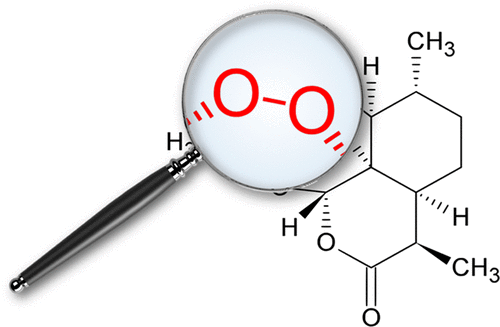当前位置:
X-MOL 学术
›
ACS Infect. Dis.
›
论文详情
Our official English website, www.x-mol.net, welcomes your
feedback! (Note: you will need to create a separate account there.)
From Magic Bullet to Magic Bomb: Reductive Bioactivation of Antiparasitic Agents
ACS Infectious Diseases ( IF 4.0 ) Pub Date : 2021-09-02 , DOI: 10.1021/acsinfecdis.1c00118 Sergio Wittlin 1, 2 , Pascal Mäser 1, 2
ACS Infectious Diseases ( IF 4.0 ) Pub Date : 2021-09-02 , DOI: 10.1021/acsinfecdis.1c00118 Sergio Wittlin 1, 2 , Pascal Mäser 1, 2
Affiliation

|
Paul Ehrlich coined the term “magic bullet” to describe how a drug kills the parasite inside its human host without harming the host itself. Ehrlich concluded that the drug must have a greater affinity to the parasite than to human cells. Today, the specificity of drug action is understood in terms of the drug target. An ideal target is a protein that is essential for the proliferation of the pathogen but absent in human cells. Examples are the enzymes of folate synthesis or of the nonmevalonate pathway in the malaria parasites. However, there are other ways how a drug can kill selectively. Of particular relevance is the specific activation of a prodrug inside the pathogen but not in the host, as this is how the current frontrunners of parasite chemotherapy work. Artemisinins for malaria, fexinidazole for human African trypanosomiasis, benznidazole for Chagas’ disease, metronidazole for intestinal protozoa: these molecules are “magic bombs” that are triggered selectively. They are prodrugs that need to be activated by chemical reduction, i.e., the acquisition of an electron, which occurs in the parasite. Such a mode of action is shared by the novel antimalarial peroxides arterolane and artefenomel, which are activated by reduction of the endoperoxide bond with ferrous heme as the likely electron donor, a metabolic end-product of Plasmodium falciparum. Here we provide an overview on the molecular basis of selectivity of antiparasitic drug action with particular reference to the ozonides, the new generation of antimalarial peroxides designed by Jonathan Vennerstrom.
中文翻译:

从魔法子弹到魔法炸弹:抗寄生虫剂的还原性生物活化
Paul Ehrlich 创造了“灵丹妙药”一词来描述药物如何杀死人类宿主体内的寄生虫而不伤害宿主本身。Ehrlich 得出结论,该药物对寄生虫的亲和力必须高于对人体细胞的亲和力。今天,药物作用的特异性是根据药物靶点来理解的。理想的目标是一种对病原体增殖至关重要但在人体细胞中不存在的蛋白质。例子是叶酸合成酶或疟原虫中非甲羟戊酸途径的酶。然而,药物可以通过其他方式选择性杀死。特别相关的是前药在病原体内部而不是在宿主体内的特异性激活,因为这就是当前寄生虫化学疗法的领跑者的工作方式。用于疟疾的青蒿素,用于人类非洲锥虫病的非西硝唑,苯并硝唑用于南美锥虫病,甲硝唑用于肠道原生动物:这些分子是选择性触发的“魔法炸弹”。它们是需要通过化学还原(即在寄生虫中获得电子)来激活的前药。这种作用模式由新型抗疟过氧化物arterolane和artefenomel共享,它们通过还原内过氧化物键而被激活,亚铁血红素作为可能的电子供体,一种代谢终产物恶性疟原虫。在这里,我们概述了抗寄生虫药物作用选择性的分子基础,特别是 Jonathan Vennerstrom 设计的新一代抗疟过氧化物 ozonides。
更新日期:2021-10-08
中文翻译:

从魔法子弹到魔法炸弹:抗寄生虫剂的还原性生物活化
Paul Ehrlich 创造了“灵丹妙药”一词来描述药物如何杀死人类宿主体内的寄生虫而不伤害宿主本身。Ehrlich 得出结论,该药物对寄生虫的亲和力必须高于对人体细胞的亲和力。今天,药物作用的特异性是根据药物靶点来理解的。理想的目标是一种对病原体增殖至关重要但在人体细胞中不存在的蛋白质。例子是叶酸合成酶或疟原虫中非甲羟戊酸途径的酶。然而,药物可以通过其他方式选择性杀死。特别相关的是前药在病原体内部而不是在宿主体内的特异性激活,因为这就是当前寄生虫化学疗法的领跑者的工作方式。用于疟疾的青蒿素,用于人类非洲锥虫病的非西硝唑,苯并硝唑用于南美锥虫病,甲硝唑用于肠道原生动物:这些分子是选择性触发的“魔法炸弹”。它们是需要通过化学还原(即在寄生虫中获得电子)来激活的前药。这种作用模式由新型抗疟过氧化物arterolane和artefenomel共享,它们通过还原内过氧化物键而被激活,亚铁血红素作为可能的电子供体,一种代谢终产物恶性疟原虫。在这里,我们概述了抗寄生虫药物作用选择性的分子基础,特别是 Jonathan Vennerstrom 设计的新一代抗疟过氧化物 ozonides。











































 京公网安备 11010802027423号
京公网安备 11010802027423号